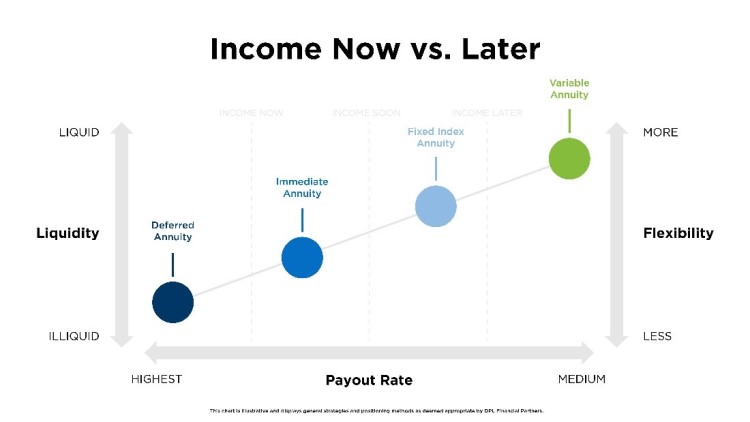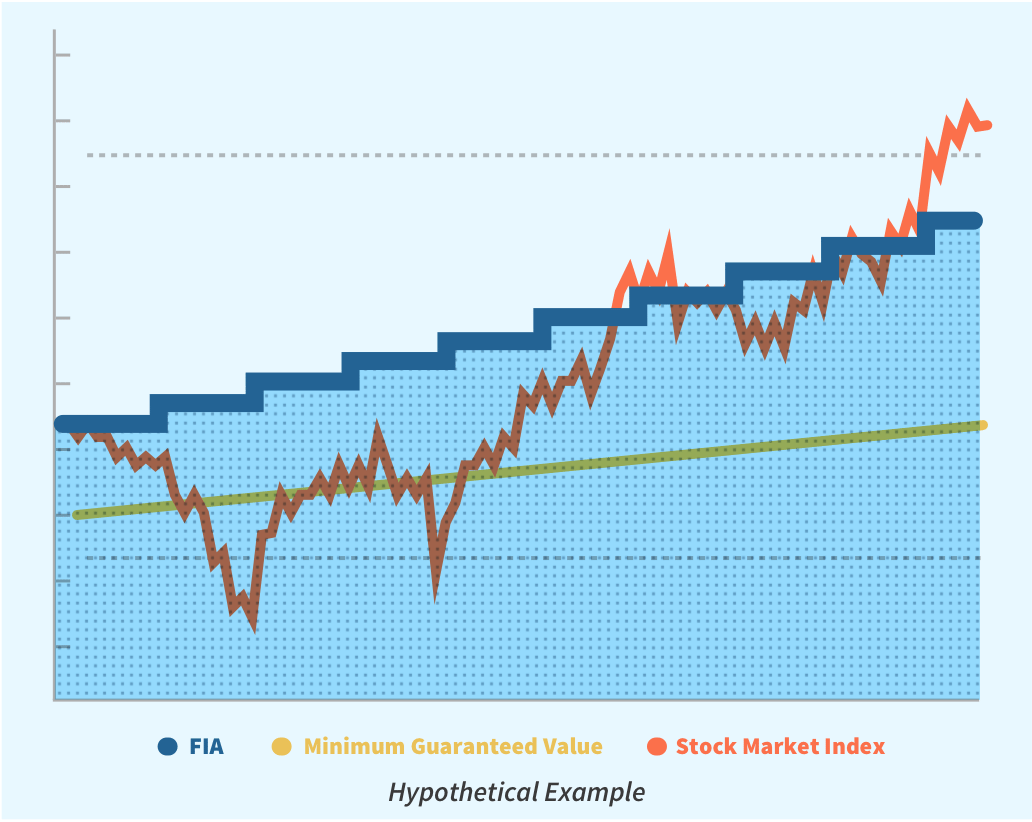All Categories
Featured
Table of Contents
Equally as with a repaired annuity, the owner of a variable annuity pays an insurance provider a round figure or collection of settlements in exchange for the promise of a collection of future payments in return. But as mentioned over, while a repaired annuity grows at an assured, constant price, a variable annuity grows at a variable rate that depends upon the performance of the underlying investments, called sub-accounts.

During the accumulation phase, assets purchased variable annuity sub-accounts grow on a tax-deferred basis and are exhausted only when the agreement proprietor withdraws those profits from the account. After the accumulation phase comes the income phase. Gradually, variable annuity possessions ought to in theory raise in worth up until the agreement proprietor chooses she or he want to start withdrawing cash from the account.
One of the most considerable problem that variable annuities usually present is high price. Variable annuities have a number of layers of costs and costs that can, in aggregate, create a drag of as much as 3-4% of the agreement's value annually. Below are the most usual costs related to variable annuities. This cost compensates the insurance provider for the threat that it assumes under the regards to the contract.
Understanding Annuities Variable Vs Fixed A Closer Look at How Retirement Planning Works Defining Fixed Vs Variable Annuity Benefits of Fixed Annuity Vs Equity-linked Variable Annuity Why Choosing the Right Financial Strategy Matters for Retirement Planning Variable Vs Fixed Annuity: Simplified Key Differences Between Retirement Income Fixed Vs Variable Annuity Understanding the Rewards of Long-Term Investments Who Should Consider Annuities Fixed Vs Variable? Tips for Choosing Fixed Vs Variable Annuities FAQs About Fixed Annuity Vs Variable Annuity Common Mistakes to Avoid When Choosing a Financial Strategy Financial Planning Simplified: Understanding Fixed Annuity Or Variable Annuity A Beginner’s Guide to Smart Investment Decisions A Closer Look at How to Build a Retirement Plan
M&E expenditure costs are computed as a percent of the agreement worth Annuity issuers pass on recordkeeping and other administrative expenses to the agreement proprietor. This can be in the kind of a flat annual cost or a percent of the contract worth. Management costs might be included as component of the M&E risk cost or might be assessed separately.
These charges can range from 0.1% for easy funds to 1.5% or more for proactively taken care of funds. Annuity agreements can be tailored in a number of methods to offer the specific demands of the agreement owner. Some typical variable annuity bikers include ensured minimal buildup advantage (GMAB), guaranteed minimum withdrawal advantage (GMWB), and assured minimum income benefit (GMIB).

Variable annuity contributions give no such tax deduction. Variable annuities tend to be highly ineffective lorries for passing wealth to the future generation since they do not enjoy a cost-basis modification when the initial contract proprietor dies. When the owner of a taxed investment account passes away, the price bases of the investments held in the account are gotten used to mirror the market costs of those investments at the time of the proprietor's fatality.
Decoding Annuity Fixed Vs Variable Key Insights on Immediate Fixed Annuity Vs Variable Annuity Defining the Right Financial Strategy Pros and Cons of Variable Vs Fixed Annuities Why Choosing the Right Financial Strategy Is a Smart Choice How to Compare Different Investment Plans: A Complete Overview Key Differences Between Choosing Between Fixed Annuity And Variable Annuity Understanding the Risks of Fixed Annuity Vs Variable Annuity Who Should Consider Fixed Annuity Vs Equity-linked Variable Annuity? Tips for Choosing Annuity Fixed Vs Variable FAQs About Variable Annuity Vs Fixed Annuity Common Mistakes to Avoid When Planning Your Retirement Financial Planning Simplified: Understanding Your Options A Beginner’s Guide to Variable Annuity Vs Fixed Annuity A Closer Look at Fixed Indexed Annuity Vs Market-variable Annuity
Such is not the situation with variable annuities. Investments held within a variable annuity do not receive a cost-basis adjustment when the original owner of the annuity passes away.
One considerable issue associated with variable annuities is the potential for problems of passion that may feed on the component of annuity salespeople. Unlike an economic consultant, who has a fiduciary obligation to make investment decisions that benefit the customer, an insurance broker has no such fiduciary responsibility. Annuity sales are highly profitable for the insurance policy specialists that sell them as a result of high upfront sales compensations.

Many variable annuity agreements have language which places a cap on the portion of gain that can be experienced by specific sub-accounts. These caps protect against the annuity owner from completely joining a section of gains that might otherwise be enjoyed in years in which markets create substantial returns. From an outsider's point of view, presumably that investors are trading a cap on financial investment returns for the previously mentioned assured flooring on investment returns.
As kept in mind above, surrender costs can significantly restrict an annuity owner's capability to move assets out of an annuity in the early years of the contract. Even more, while a lot of variable annuities enable contract owners to withdraw a specified quantity during the accumulation phase, withdrawals yet amount normally cause a company-imposed cost.
Withdrawals made from a set rate of interest investment choice might likewise experience a "market price modification" or MVA. An MVA adjusts the worth of the withdrawal to mirror any kind of changes in rate of interest from the moment that the cash was bought the fixed-rate alternative to the time that it was withdrawn.

Quite frequently, even the salespeople that offer them do not totally understand exactly how they function, and so salesmen sometimes prey on a purchaser's feelings to market variable annuities instead of the merits and suitability of the items themselves. We think that financiers ought to totally comprehend what they possess and just how much they are paying to own it.
Exploring the Basics of Retirement Options Everything You Need to Know About Fixed Index Annuity Vs Variable Annuity What Is What Is Variable Annuity Vs Fixed Annuity? Pros and Cons of Fixed Vs Variable Annuity Why Choosing the Right Financial Strategy Is Worth Considering How to Compare Different Investment Plans: A Complete Overview Key Differences Between Fixed Annuity Vs Equity-linked Variable Annuity Understanding the Key Features of Deferred Annuity Vs Variable Annuity Who Should Consider Strategic Financial Planning? Tips for Choosing the Best Investment Strategy FAQs About Planning Your Financial Future Common Mistakes to Avoid When Choosing Fixed Vs Variable Annuity Financial Planning Simplified: Understanding Your Options A Beginner’s Guide to Variable Annuity Vs Fixed Indexed Annuity A Closer Look at How to Build a Retirement Plan
The same can not be stated for variable annuity assets held in fixed-rate financial investments. These properties legitimately belong to the insurance provider and would consequently go to danger if the company were to fail. Any kind of assurances that the insurance firm has concurred to offer, such as a guaranteed minimal earnings benefit, would certainly be in inquiry in the event of a business failure.
Possible purchasers of variable annuities need to comprehend and think about the financial condition of the releasing insurance business before entering right into an annuity agreement. While the benefits and drawbacks of different sorts of annuities can be questioned, the real concern bordering annuities is that of viability. Simply put, the inquiry is: who should have a variable annuity? This inquiry can be difficult to address, given the myriad variations readily available in the variable annuity world, however there are some fundamental guidelines that can aid investors decide whether annuities must play a function in their monetary strategies.
After all, as the saying goes: "Caveat emptor!" This post is prepared by Pekin Hardy Strauss, Inc. Deferred annuities explained. ("Pekin Hardy," dba Pekin Hardy Strauss Wealth Management) for informational functions just and is not planned as a deal or solicitation for business. The details and data in this post does not comprise legal, tax obligation, accounting, investment, or other professional guidance
Table of Contents
Latest Posts
Exploring the Basics of Retirement Options Key Insights on Your Financial Future Breaking Down the Basics of Variable Annuity Vs Fixed Annuity Advantages and Disadvantages of Different Retirement Plan
Understanding Financial Strategies Everything You Need to Know About Fixed Vs Variable Annuity Pros And Cons Defining the Right Financial Strategy Features of Fixed Vs Variable Annuities Why Fixed Inc
Exploring the Basics of Retirement Options Everything You Need to Know About Variable Annuities Vs Fixed Annuities Defining Variable Annuities Vs Fixed Annuities Pros and Cons of Fixed Income Annuity
More
Latest Posts